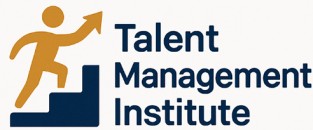
Understanding the Importance of Sales Messaging
Unveiling the Role of Sales Messaging
Understanding the importance of effective sales messaging is crucial for any business looking to thrive in today's competitive market. A well-devised sales messaging strategy can significantly enhance customer communication, ensuring that the message aligns with both the business objectives and the prospect's needs. This alignment not only aids in building rapport with prospects, but also in guiding them through the sales process. Incorporating sales messaging as a vital component of your sales process will also support the sales teams in efficiently addressing customer pain points. When prospects are made aware of how a product or service can resolve their issues, they are more likely to move forward in the sales pipeline, increasing the probability to close deals successfully. Moreover, crafting advanced messaging techniques proves beneficial when expanding your reach beyond traditional methods. With the evolution of digital platforms, incorporating social media and data-driven insights into your strategy will enhance your team's prospecting abilities, improving sales performance over time. In order to maintain the effectiveness of your sales messaging, it's important to recognize the changes in the sales environment. To navigate such shifts successfully, you may find it beneficial to explore strategies that accommodate temporary job shifts, which are becoming more prevalent in the recruitment sector. Read more about managing changes in sales messaging. By prioritizing a solid foundation in sales messaging, businesses can ensure they are well-positioned to engage with prospects effectively and improve the clarity of their communication, setting the stage for increased sales success in the long term.Identifying Your Target Audience
Pinpointing Your Ideal Customer Base
Identifying your target audience is a crucial step in enhancing your sales messaging. Without a clear understanding of who your prospects are, your communication efforts may fall flat. A well-defined target audience allows your sales team to tailor messages that resonate, ultimately improving sales performance.
To begin, gather data on your current customers. Analyze their demographics, purchasing behavior, and preferences. This data-driven approach will help you identify patterns and common characteristics among your best customers. Consider the following steps:
- Segment Your Audience: Break down your audience into specific segments based on factors such as age, location, industry, or buying habits. This segmentation will help your sales reps focus their efforts more effectively.
- Understand Pain Points: Identify the challenges and pain points your prospects face. Knowing these will allow your sales strategy to address them directly, positioning your product or service as the solution.
- Leverage Social Media: Use social media platforms to gather insights into your audience's interests and behaviors. This can provide valuable information for refining your sales process.
- Engage in Active Listening: Encourage your sales teams to listen actively during interactions with prospects. This will help them gather real-time feedback and adjust their messaging accordingly.
By understanding your target audience, you can craft messages that speak directly to their needs and desires. This targeted approach not only enhances your sales messaging but also builds trust and credibility with your prospects. For more insights on navigating the complexities of identifying and reaching your target audience, consider exploring resources on navigating the complexities of CRO executive recruitment.
Crafting Clear and Concise Messages
Creating Impactful Messages
In the competitive world of sales, conveying your message effectively can make a significant difference in your sales process. Crafting clear and concise messages is not just about relaying information; it's about leaving a lasting impression on your prospects and customers, ensuring they understand the value your product or service brings to the table.
First, clarity should be at the forefront of your messaging strategy. When it comes to communicating with a potential customer, confusion can be a deal-breaker. Use language that your target audience will easily comprehend and relate to, cutting through the noise of overly complex jargon. Your message should be direct, emphasizing the solution your business provides to their pain points.
- Be Precise: Get straight to the point. Avoid beating around the bush which can waste both your time and the prospect's.
- Know Your Audience: Leverage the data-driven insights from your marketing strategy to tailor your communication to what your audience values most.
- Highlight Benefits: Instead of just pushing your products and services, focus on the added value and the benefits that they offer, aiming to increase sales effectively.
Additionally, it's crucial to align your messaging with the overall sales strategy. Consistency across all communication channels, from direct emails to social media interactions, reinforces the same core message, thereby helping your team maintain a unified voice throughout the customer engagement process.
Research and active listening during sales prospecting will also help your sales reps develop messages that resonate with each prospect. Customizing messages based on prospect interactions, collected feedback, and prior knowledge of their needs enhances the likelihood of a successful conversion.
Finally, employing best practices in message creation requires ongoing refinement. Incorporating feedback from both your sales team and customers will help you make the necessary adjustments to improve sales messaging. For more on the importance of feedback, explore this resource on interview feedback.
Utilizing Emotional Triggers
Emotional Engagement with Prospects
In the ever-evolving world of sales, understanding and tapping into the emotions of your prospects can significantly enhance your communication strategy. This approach involves more than simply pitching your product; it's about establishing a connection that resonates on a personal level. Emotional triggers can be powerful drivers that influence purchasing decisions, making the difference between a prospect's hesitance and their commitment to your offering. Sales messaging, when interwoven with emotional cues, doesn't just capture attention; it holds it. By aligning your messaging with the pain points that matter most to your prospects, you foster a relationship that goes beyond business. This alignment with your audience's needs will improve sales as prospects begin to see your product or service not just as a transaction, but as a solution to their most pressing challenges. Consider how your sales team can leverage data-driven insights to identify key emotional prompts relevant to your prospects. Whether through social media interactions, feedback from customer surveys, or direct communications during the sales process, these insights can inform how best to engage your audience emotionally. Active listening is crucial in this context, ensuring that sales reps remain receptive to both explicit and implicit signals from potential customers. Integrating emotional triggers within your messages doesn't require a complete overhaul of your existing sales strategy. Instead, view it as an enhancement—a way to enrich what you're already doing. By refining your approach to address the emotional undercurrents of your target market, you open the door to more meaningful interactions and, ultimately, better sales performance. To effectively engage emotionally, sales teams should also consider continuous training and workshops on best practices surrounding emotional intelligence in selling. This ongoing development will help maintain a high standard of communication that is both authentic and impactful. In sum, utilizing emotional engagement is not just a tactic; it's a commitment to creating lasting connections that drive long-term business success.Incorporating Feedback and Continuous Improvement
Embrace Feedback for Continuous Growth
In the dynamic world of sales, feedback is a crucial component that can significantly enhance your sales messaging. By actively listening to your customers and prospects, you can gain valuable insights into their pain points and expectations. This process not only helps in refining your communication strategy but also in building a strong rapport with your audience.
To effectively incorporate feedback, consider the following best practices:
- Engage with Your Sales Team: Your sales reps are on the front lines, interacting with customers daily. Regularly gather their insights and experiences to identify areas for improvement in your messaging.
- Utilize Data-Driven Insights: Leverage data from your sales pipeline and customer interactions to understand what resonates with your audience. This data-driven approach will help in crafting messages that align with customer needs.
- Encourage Open Communication: Foster an environment where feedback is welcomed and valued. This will encourage your team to share honest insights, leading to more effective sales strategies.
- Adapt and Evolve: The market and customer preferences are constantly changing. Regularly update your sales process and messaging to reflect these changes, ensuring long-term success.
By integrating feedback into your sales strategy, you not only improve sales performance but also create a more responsive and customer-centric approach. This continuous improvement cycle is essential for maintaining a competitive edge in the business landscape.













